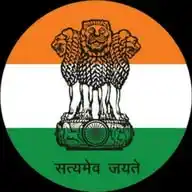
UPSC™ History UPSC UPSC UPSC UPSC UPSC UPSC Upsc Upsc UPSC UPSC UPSC UPSC UPSC UPSC UPSC UPSC UPSC™
June 15, 2025 at 06:36 AM
🔆 Development of Vernacular Education
📍 1835, 1836, 1838:
✅ William Adam’s reports on vernacular education in Bengal and Bihar highlighted defects in the system.
📍 1843-53:
✅ James Jonathan’s experiments in North West Provinces (UP), focusing on opening government schools for vernacular education and normal schools for teacher training.
📍 1853:
✅ In a famous minute, Lord Dalhousie expressed strong support for vernacular education.
📍 1854:
✅ Wood’s Despatch outlined provisions for vernacular education:
1. Improvement of standards
2. Supervision by government agencies
3. Normal schools to train teachers
📍 1854-71:
✅ The government focused on secondary vernacular education, leading to an increase in vernacular schools by more than five-fold.
📍 1882:
✅ The Hunter Commission recommended state efforts to improve vernacular education and mass education to be taught through vernaculars.
📍 1904:
✅ Education policy focused on vernacular education, providing increased grants for it.
📍 1929:
✅ Hartog Committee gave a gloomy view of primary education.
📍 1937:
✅ Congress ministries encouraged the growth of vernacular schools.
📍 Development of Technical Education:
✅ Engineering Colleges:
- Roorkee College (1847)
- Calcutta College of Engineering (1856)
- Poona College of Engineering affiliated to Bombay University.
✅ Medical Training:
- Medical College in Calcutta (1835).
- Lord Curzon worked to broaden agriculture, medicine, engineering, and other professional education through institutions like Pusa Agricultural College.
👍
😭
😮
🙏
4